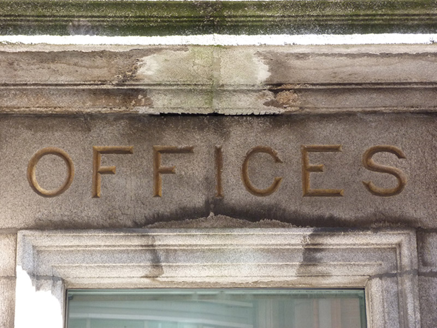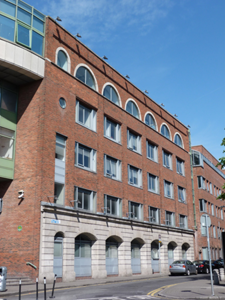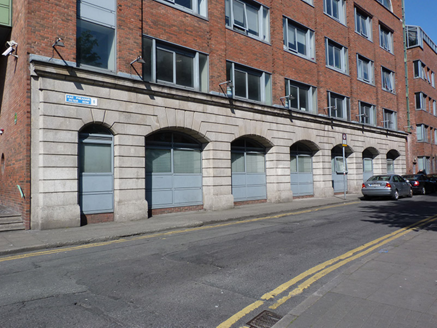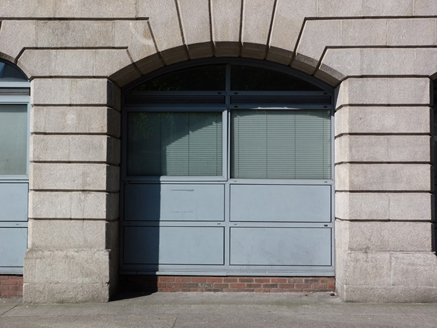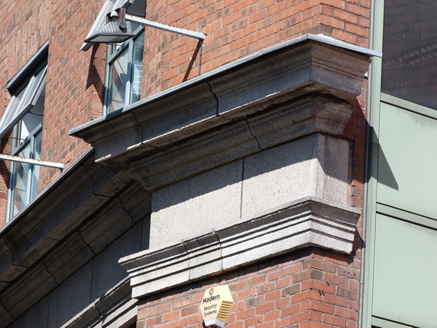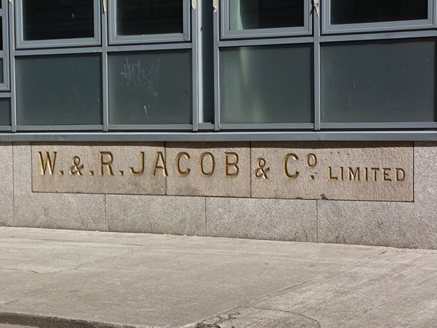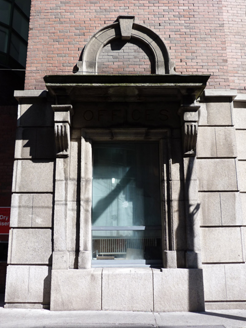Survey Data
Reg No
50110020
Rating
Regional
Categories of Special Interest
Architectural, Historical, Social, Technical
Previous Name
W & R Jacobs
Original Use
Bakery
In Use As
Institute of technology
Date
1860 - 1880
Coordinates
315514, 233408
Date Recorded
26/05/2017
Date Updated
--/--/--
Description
Remains of former biscuit factory, built c. 1870, comprising arcaded seven-bay granite ground floor on Peter's Row, doorway, fascia and cornice to block on Bishop Street, and lettering to base of further block to west on Bishop Street. All now forming part of third level college, built 1994, with recent recessed curved-plan entrance link block. Original channelled granite walling on moulded plinth to Peter's Row, with moulded cornice, and punctuated by segmental archways, formerly vehicular entrances, except for southernmost pedestrian doorway, with chamfered surrounds and infilled with recent windows. Square-headed former doorway to west end of recent Bishop Street block has granite infill to base to convert opening to window, and with carved granite architrave, moulded cornice on heavy fluted consoles and with round-headed former fanlight now infilled with brickwork above having moulded surround and keystone, and having lettering 'Offices' over architrave. Cornice and fascia to same block, located between first and second floors, with heavy and deeply projecting moulded cornice to plain fascia over moulded stringcourse and further course. Buildings are of brick, except for ground floors with channelled granite cladding to ground floor, and upper floors to Peter's Row are of similar brick. Lettering 'W.R. Jacob & Co. Ltd' to base of westernmost recent granite-clad block on Bishop Street.
Appraisal
The survival of a number of architectural fragments of the former Jacob's biscuit factory, and their retention in the late twentieth-century redevelopment of the site, is noteworthy. The most significant remnant is the well-executed arcade on Peter's Row. The decorative doorcase, which gave access to the company's offices on Bishop Street, adds further functional and decorative interest. Its carved classical detailing lending a sense of gravitas to this former industrial complex. The inscribed lettering to this doorway and the company name now inserted to the base of another recent block on the same street, provides contextual and historical interest. It is a reminder of the Quaker family, the Jacobs, who had a small steam biscuit factory on Peter's Row in the 1850s, and went on to establish one of the largest industries in Dublin in the late nineteenth century. The red brick and granite industrial buildings and associated offices were typical of late nineteenth-century construction. This site was seized by members of the Second Battalion of the Dublin Brigade of the Irish Volunteers on Easter Monday 1916. It is of considerable historical significance as a battle site during the Rising, when it functioned as a garrison under the command of Thomas MacDonagh. Its tall towers provided observation points to view the movement of British troops from Portobello and Wellington Barracks.
